Our world can not function without bees. It is estimated by the United States Department of Agriculture that bees and butterflies pollinate 75% of flowering plants and 35% of the world’s food crops. This post will focus on the helper bees, including bumble bees and honey bees. I will explain the differences between bees; what pollination is and the importance of it; the mutualistic relationships between bees and flowers; what types of flowers attract the pollinators; and finally how and why the bee population has become so fragile and what can be done to prevent theses pollinators from becoming extinct.
(Some of the links within this post are affiliate links on which I receive a small compensation from the sale of certain items.)
(As an Amazon Associate I earn from qualifying purchases.)
Honey Bees or Bumble Bees? What’s the Difference?
There are nearly 20,000 different species of bees worldwide. However, the most common are the honey bees and bumble bees. They actively seek out flowers, unlike hummingbirds who just flit around looking for nectar.
Appearance:
Honey bees are smaller and thinner than bumble bees and can be mistaken for wasps. They also have a clear distinction between their head and body along with 2 sets of wings; one larger set up front and one smaller set behind.
Bumble bees are larger, more plump, round and fuzzy. Their bodies are also in one clump or section, not divided like honey bees.
Characteristics:
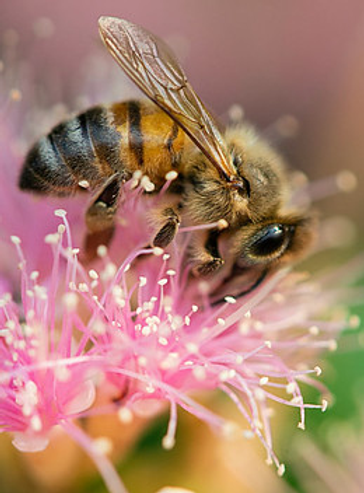
The honey bees are much more social. They like to live closely together in hives with tens of thousands of other bees. Honey bees can be found in hollow trees or in a controlled environment operated by a beekeeper. They produce lots of honey and can survive cold winters. Their queen can live up to 4 years.
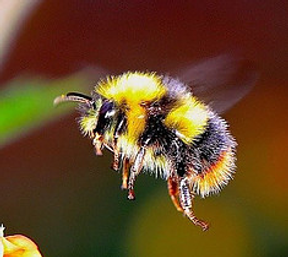
Bumble bees are a little less social. They live in nests usually found burrowed in the ground. They too produce honey but only for their own consumption. The queen bee is the only one who will survive cold winters by hibernating deep under the ground.
Pollinators:
Bumble bees are the best pollinators due to their large size which enables them to carry more pollen. Their longer tongue allows them to collect pollen
from many varieties of plants, and they are fast workers. Because they can extract pollen from many types of flowers, they are better able to cross-pollinate (to transfer pollen from one plant to the next).
Honey bees have one advantage over bumble bees – they can communicate with one another. They let each other know where a good supply of pollen is stashed through a dance! The honey bees then rush off to that area before the pollen has been extracted from the area where they started. Because of their hastiness to keep moving on to “greener pastures”, they leave behind a lot of pollen.
Bumble bees are more patient and completely draw out all the pollen before moving on, thus being more thorough pollinators.
So, What Is Pollination?
Pollination is “the transfer of pollen to a stigma, ovule, flower, or plant to allow fertilization. The flowers depend on bees for pollination.” Source: Oxford Languages. This transfer of pollen is done by the bee landing on one flower, collecting pollen on its body, and then flying to another and rubbing that pollen onto the next plant.
In order for a plant to create more flowers or fruit, it has to be pollinated which creates the juicy ovaries that will produce a flower or fruit. This process is called “set fruit”.
Although some flowers and crops can reproduce on their own, the vast majority need to be pollinated through bees and/or butterflies. You can read more about butterflies in my previous post, What Flowers Attract Hummingbirds and Butterflies. So as you can imagine, without our pollinators we would be in dire straits! No more flowers, fruits, vegetables, etc.…
Mutualistic Population – The What???
Bees and flowers have a mutually beneficial relationship. The bees benefit from the flower by extracting pollen and nectar which nourishes them which they share with their fellow bees. The flowers benefit from the bee because it transfers pollen to other plants thus helping them produce more flowers.
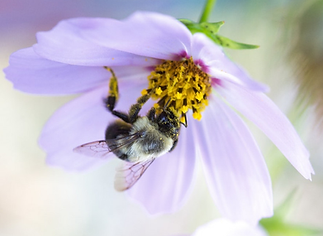
There are three forms of symbiotic relationships: mutualism, commensalism, and parasitism. However, I am only interested in the mutualistic benefits of bees and flowers in this blog.
Save the Bees!!!
As Greenpeace has noted: “…honey bees, both wild and domestic, perform about 80 percent of all pollination worldwide. A single bee colony can pollinate 300 million flowers each day.” According to Political Insider, 40% of US honey-bee colonies died off last year.
As you can surmise, this is gravely affecting the pollination of flowers and crops in the US.
Reasons
There are many reasons why the bee population is diminishing. Here are just a few.
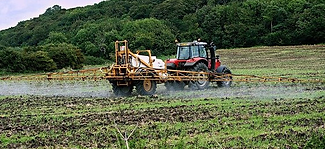
- pesticides
- loss of habitat
- air pollution
- drought
- global warming
- decreasing crop diversity (refer to my post on How To Learn From Plants for an explanation of this)
By far the most detrimental impact on the bee population in the United States is pesticide use. More than 150 different residual pesticides were found in bee pollen according to Eric Mussen, a University of California agriculturalist.
The practice of converting farms and forests into mono-culture farms which are then sprinkled with pesticides is another leading cause of the shrinking of wild bee habitats.
- Ways to Save Our Bees
- ban the 7 most dangerous pesticides
- preserve bees’ natural habitat
- restore ecological agriculture (refer to How To Learn From Plants)
These would be massive undertakings directed by our government. However, you can do your part to save the bees. Read on.
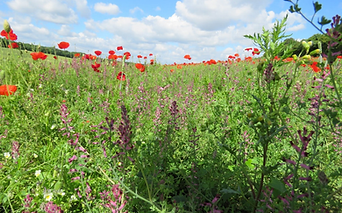
Everyday People To The Rescue!
You can do your small part to help save our pollinators by planting numerous flowers in your garden. Plant flowers that are open and less layered so the bees can reach the nectar and pollen. Since some bees emerge from hibernation in February, be sure to plant flowers that bloom at that time of year (snowdrops, pussy willow, crocus). Vary your flowers so blooming time lasts through spring, summer, and fall. If you live in the south, plant flowers year round.
Bees are attracted to color. Here are a variety of flowers you may want to plant to attract bees.
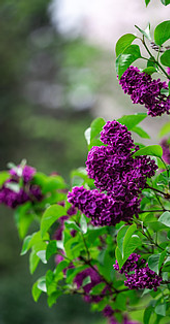
| lavender | star flower (blue borage) | bee balm |
| marjoram | abelia | chives |
| lilac | foxgloves | lupine |
| marigold | pansy | liatris |
Fear Not The Sting
Many people are reluctant to draw bees to their garden because of their sting. I get it, it hurts to be stung and could be life threatening if you are allergic to the venom. If you are not allergic to the sting, then fear not. Honeybees only sting once before dying. Bumble bees can sting multiple times but will not sting you if you do not provoke or fuss with them. So if you take sensible precautions and are not allergic to bee stings, you can help reverse decades of habitat loss.
One alternative to planting flowers in your back or front yard or both, is planting wildflowers in a park or in the back acreage of a friend’s home who owns plenty of land.
Either way, please help save our bees. You will not only be saving them, you will also be saving us!
(As an Amazon Associate I earn from qualifying purchases.)
==>Click Here for information on a natural way to control insects<==
I hope you enjoyed this post. Please leave a comment below and let me know how you make out creating a bee garden.
Happy Gardening!
Nina
bestgardeningforbeginners@gmail.com
